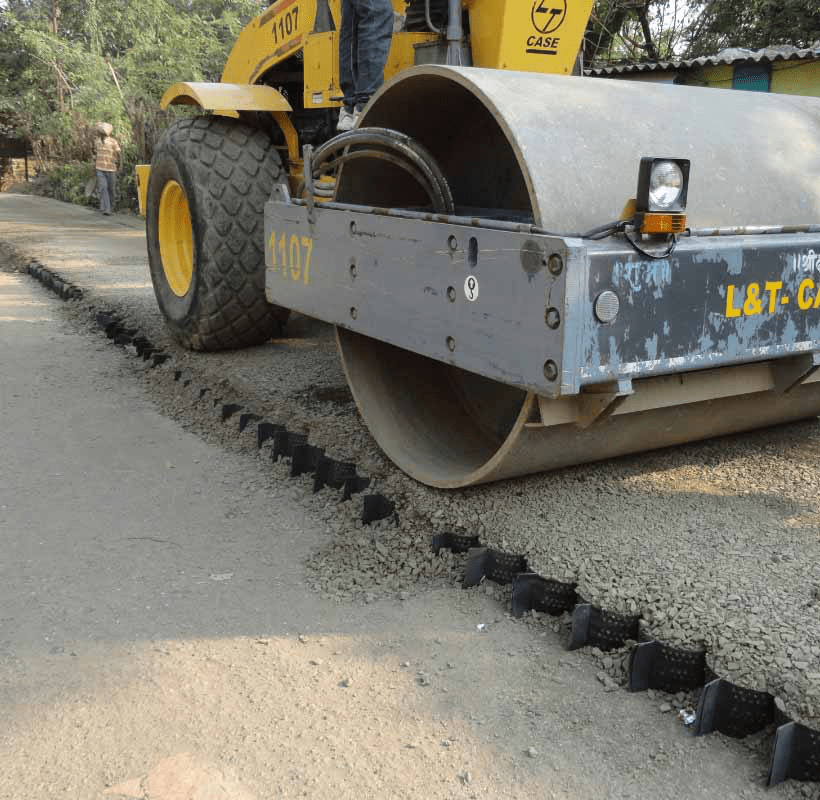Compaction
What do you mean by compaction?
Although abundantly available, soil plays a significant role not only in mankind’s existence but also in maintaining a stable and successful structure. It is a complex construction material composed of sand, water, particles and other minerals. This naturally available matter can be significantly damaged if compaction occurs. Compaction adversely impacts soil by reducing its porosity and absorption quality.
Let’s delve further into understanding compaction, its causes, impact, prevention, and different soil compaction methods.
Definition of compaction
Soil compaction usually has a negative impact on soil. However, it is a positive occurrence when it comes to construction. Soil compaction in civil engineering is the mechanical compression of the soil to increase the density and load-bearing capacity. It is done deliberately to lower the porosity of the soil. By doing this, engineers ensure the soil’s holding capacity. This process makes the soil stronger and increases the capability of the soil to support heavy weights.
What causes compaction?
Soil compaction is a degradation of the soil caused by several reasons. Listed below are some reasons:
- Sometimes, being overweight plays a negative role. Farm machinery, such as threshers, tractors, trolleys, etc., can yield excessive pressure on the soil, causing compaction. If the soil is moist, the impact is even worse.
- Some cultivation practices like digging or ploughing can cause soil compaction. These cultivation practices deteriorate the soil structure.
- In certain cases, livestock overgrazing also causes soil compaction. Herding animals are often in large numbers, which causes stomping. Stomping creates unnecessary weight in the soil, causing compaction, especially in wet soil.
- Sometimes, nature also plays a significant role in soil compaction. Excessive rain or erosion can cause soil compaction, but this is not common.
Outcomes of over-soil compaction
Over-soil compaction can have some negative outcomes. Here are some outcomes of the over-soil compaction:
- Over-soil compaction can sometimes cause issues in the structure. Cracked walls, misaligned floors, doors, etc., are common occurrences caused by over-soil compaction. This can adversely impact the structure.
- Over-soil compaction can also lead to water accumulation and seepage. Water accumulation can adversely impact the structure’s foundation, such as unwanted mold growth, rusting, or erosion.
- Due to excessive soil compaction, installing underground fittings becomes difficult. It becomes time-consuming and leads to a surge in cost and deadlines.
Mitigation methods for over-soil compaction
When over-soil compaction occurs, engineers take some measures to mitigate this situation. These mitigation steps reduce the soil compaction and make it suitable for construction.
Here are some mitigation measures that engineers follow:
- Analysing and testing of the soil: Over-soil compaction often happens because of poor analysis or testing. To know the ideal quality of soil, engineers do several analyses such as composition, texture, water-absorbing quality, and ideal level of compaction. Once these factors are known, engineers make an informed decision.
- Stage-wise compaction: Another measure to avoid over-soil compaction is to divide it into different stages. Engineers can mitigate excessive soil compaction by applying this method.
- Using less-weighted machinery: Engineers can ensure appropriate soil compaction by using less-weighted machinery. During monsoon seasons, the soil is wet and sensitive. This soil vulnerability can lead to over-soil compaction if heavy-weight machinery is used. Engineers should avoid utilising these kinds of machinery.
- Controlling soil moisture: Maintaining adequate soil moisture is a real task. If the soil is too flaky, it will not hold its position, and if the soil is too wet, over-soil compaction may happen. Engineers are required to add water smartly, allow it to dry, and subsequently repeat the process. Hence, proper moisture in the soil must be maintained without allowing over-soil compaction to happen.
- Monitoring soil compaction: Another step to mitigate or void over-soil compaction is to use special equipment that can monitor the process of soil compaction. Knowing the optimum soil compaction manually can be difficult. Hence, engineers can use specialized techniques to monitor and ensure optimum soil compaction.
Methods of soil compaction

Soil compaction can be done using different equipment that has a variable impact on soil. Some of the equipment is listed below:
- Rammers: Engineers use rammers when the area for soil compaction is less. This lightweight equipment can be used manually or mechanically.
- Vibrating-plate compactor: This equipment is widely used in soil with a coarse texture. It is also ideal for small areas and is medium-weighted machinery.
- Smooth-wheeled rollers: Engineers use smooth-wheeled rollers to smoothen the surface of soil. They efficiently smooth surfaces made from gravel, rocks, or crushed sand.
- Sheep foot roller: This equipment is an imitation of animal’s hoofs. It can effectively compact the silty or graveled soil. It is a heavy-weighted machinery and is usually preferred by engineers.
Although soil compaction negatively impacts agriculture, it is an essential part of the construction industry. It is vital to hold the foundation and other construction materials while creating a structure. With proper soil analysis, engineers can easily avoid soil compaction.
